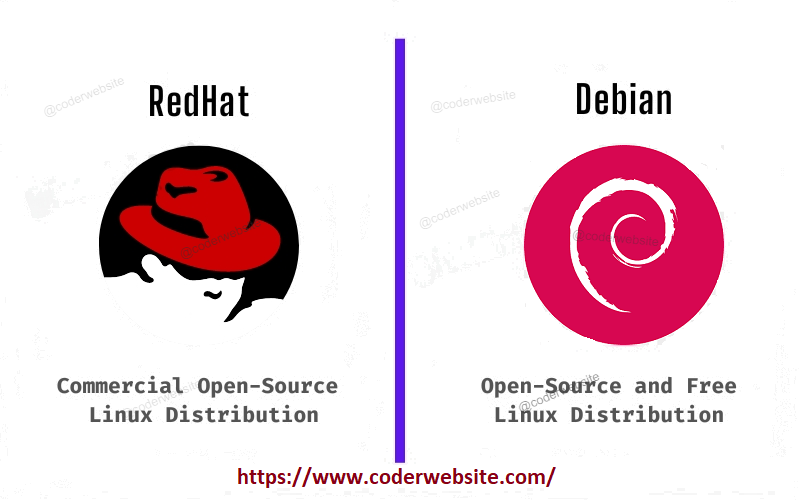Debian-Based vs Red Hat-Based Systems: A Comprehensive Comparison
Debian-Based Systems vs Red Hat-Based Systems
Debian-Based Systems and Red Hat-Based Systems are two major categories of Linux distributions, each with its own characteristics, package management systems, and philosophies. Here's a comparison between the two:
Debian-Based Systems
Introduction
Debian-Based Systems refer to Linux distributions built upon the Debian operating system as their foundational framework. These systems inherit the core characteristics, package management tools, and philosophies of Debian, known for emphasizing free and open-source software, stability, and adherence to strict licensing standards. Popular Debian-based distributions include Ubuntu, Linux Mint, and Debian itself.
1. Package Management
APT (Advanced Package Tool): Debian-based systems primarily use APT for package management. Commands like apt-get (or apt) are used to install, update, and manage software packages.
2. Distributions
Notable distributions: Ubuntu, Debian, Linux Mint, and many others. Debian-based distributions are known for their stability and reliability, making them popular for server environments and desktop usage.
3. Package Format
Debian packages use the .deb file format.
4. Philosophy
Debian places a strong emphasis on free and open-source software. It has a strict policy regarding software licensing and includes only open-source software in its official repositories.
5. Release Cycle
Debian follows a stable release model with long-term support (LTS) versions. This results in a longer release cycle, with a focus on stability and security.
6. System Configuration
Configuration files are typically stored in the /etc directory, and package management tools like APT manage these files.
Red Hat-Based Systems
Introduction
Red Hat-Based Systems are Linux distributions derived from or influenced by the Red Hat operating system. These systems share commonalities with Red Hat, including package management tools like YUM (Yellowdog Updater, Modified) and DNF (Dandified Yum), as well as the use of RPM (Red Hat Package Manager) package format. Red Hat-Based Systems are known for their stability, robustness, and suitability for enterprise environments. Prominent distributions include Red Hat Enterprise Linux (RHEL), CentOS, and Fedora.
1. Package Management
YUM (Yellowdog Updater, Modified) and DNF (Dandified Yum): Red Hat-based systems historically used yum and have transitioned to dnf in more recent versions like CentOS 8 and Fedora. These tools are used for package management.
2. Distributions
Notable distributions: Red Hat Enterprise Linux (RHEL), CentOS, Fedora. Red Hat-based distributions are often used in enterprise environments due to their focus on stability and support.
3. Package Format
Red Hat packages use the .rpm file format.
4. Philosophy
Red Hat, Inc., the company behind Red Hat-based distributions, offers commercial support and certifications for its products. While they include open-source software, they may also include some proprietary software and drivers.
5. Release Cycle
Red Hat-based distributions follow a release cycle with major versions and regular updates. CentOS Stream, a variation of CentOS, offers a rolling release model.
6. System Configuration
Configuration files are typically stored in the /etc directory, and the yum or dnf package manager does not manage these files directly.
Summary
In summary, the choice between Debian-based and Red Hat-based systems depends on your specific needs and preferences. Debian-based systems are often favored for their stability and adherence to free software principles, while Red Hat-based systems are commonly used in enterprise environments with commercial support options. The package management tools and package formats also differ between the two ecosystems.
